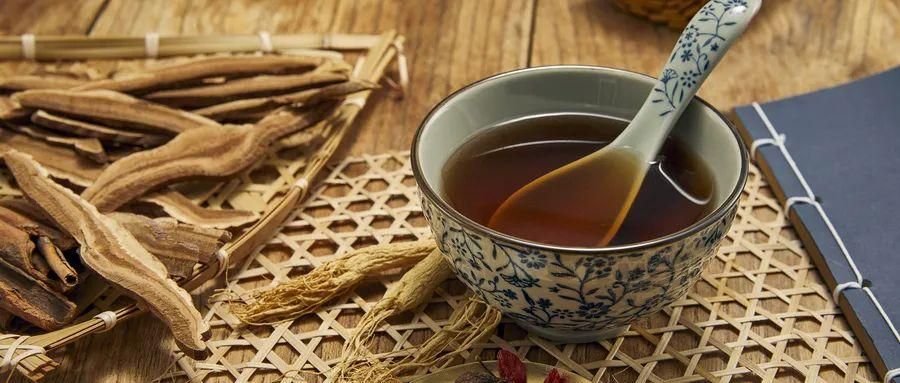How well you fare in winter depends on how you spend the latter half of autumn.
According to Traditional Chinese Medicine, the lungs are associated with the climate of autumn. The refreshing and moist air of autumn aligns with the lungs’ preference for a refreshing and moist environment. As a result, lung energy is at its strongest during autumn. However, autumn is also a season when certain illnesses, such as dry skin, coughing, dry throat, and itching, are more common. It is important to take care of the lungs during this season.
Between the Start of Autumn and the White Dew solar term, there is an abundance of moisture in the environment. Exposure to cold and dampness can weaken the spleen. When the spleen is weakened, it can produce phlegm and dampness, leading to coughing in winter. Therefore, during autumn health preservation, it is important to not only nourish the lungs but also protect the spleen and dispel dampness.
Dr. Tu Siyi, a respiratory and critical care physician at the Second People’s Hospital affiliated with Fujian University of Traditional Chinese Medicine, was a guest on the “Shared Doctor” program, bringing health education on the theme of “Nourish your lungs in autumn, get sick less in winter”.

Nourishing the lungs directly can be challenging. However, we can indirectly achieve this by nourishing the spleen and dispelling dampness. According to Traditional Chinese Medicine, the spleen prefers warmth and dislikes cold. Therefore, it is recommended to consume warm foods and avoid overeating raw and cold foods, especially cold drinks and melons, which can harm the spleen yang. Additionally, a light diet with less greasy and fatty foods, and less consumption of lavish meals, can help maintain the normal physiological function of the spleen in transportation and transformation.
How to nourish the lungs in autumn?
In daily life, lung nourishment can also be approached from various aspects such as food, clothing, housing, and transportation.
Housing – Nourishing the lungs with air.
Clear and turbid air are exchanged in the lungs, so the quality of the air inhaled into the lungs has a significant impact on lung function. To maintain healthy lungs, it is important to quit smoking, avoid inhaling second-hand smoke, avoid staying in places with poor air quality for extended periods of time, and breathe in fresh air.
Transportation – Nourishing the lungs through exercise.
Autumn is an excellent time for outdoor exercise. Breathing exercises can strengthen lung function, increase resistance to illness, cultivate one’s temperament and improve one’s mood.
It is recommended to engage in some aerobic exercise, which is the preferred choice for improving cardiopulmonary function. Activities such as brisk walking, jogging, and Tai Chi are suggested. It is recommended to exercise at least 3 times a week, with each session lasting 15-20 minutes.
Drinking – Nourishing the lungs with water.
In the dry weather of autumn, the lungs are more susceptible to losing moisture. Therefore, it is necessary to drink more water during this season to ensure the lubrication of the lungs and respiratory tract, allowing the lungs to safely pass through autumn.
This “water” is not just plain boiled water, but also includes nourishing soups for the lungs such as pear water and white fungus soup.
Eating – Nourishing the lungs with food.
According to traditional Chinese medicine, dryness is a yang evil, which can easily damage the lungs and consume lung yin. A reasonable diet can nourish the lungs. Therefore, spicy and stimulating foods should be eaten less as they can harm the lungs. Instead, eat more foods that nourish yin and moisten the lungs, such as white fungus, autumn pears, lilies, fox nuts, and honey, especially white foods such as pears, poria cocos, and white fungus. Eating codonopsis and astragalus to nourish the spleen and stomach can also achieve the goal of nourishing the lungs.
Codonopsis and Ophiopogon Soup
Ingredients: 10g of Codonopsis, 10g of Honey-Fried Astragalus, 10g of Ophiopogon, and 10g of Schisandra.
Suitable for: People with palpitations, shortness of breath, sweating, dry mouth, and poor sleep. This soup has the effect of nourishing qi, nourishing yin, and promoting fluid production.

Ganoderma nourishes the lungs and replenishes the qi of the five internal organs
According to the “Compendium of Materia Medica”, Ganoderma enters the five meridians (kidney meridian, liver meridian, heart meridian, spleen meridian, and lung meridian) , which can replenish the qi of the five internal organs throughout the body.

In the book “Lingzhi: From Mystery to Science”, the author Lin Zhibin introduced a Ganoderma Lung-Nourishing Soup (20g of Ganoderma, 4g of Sophora flavescens, and 3g of Licorice) for the treatment of mild asthma patients. As a result, the main symptoms of the patients alleviated significantly after treatment.
Ganoderma has an immunomodulatory effect, can improve the proportion imbalance of T-cell subgroups during asthma, and inhibit the release of allergic mediators. Sophora flavescens has anti-inflammatory and anti-allergic effects and can reduce the airway hyperresponsiveness of asthma patients. Licorice can relieve cough, expel phlegm, and has anti-inflammatory effects. The combination of these three medicines has a synergistic effect.
The information is from pages 44-47 of the book “Lingzhi: From Mystery to Science”.
Ganoderma Lung-Nourishing Soup
Ingredients: 20g of Ganoderma, 4g of Sophora flavescens, and 3g of Licorice.
Suitable for: Patients with mild asthma.




